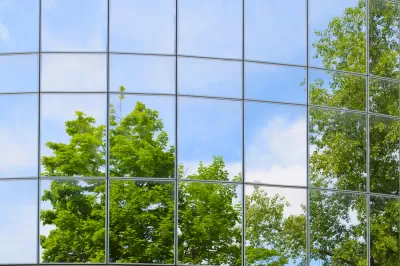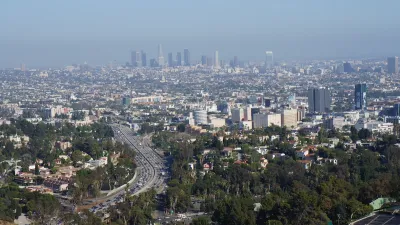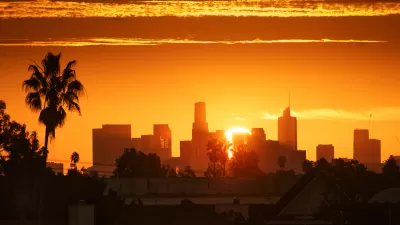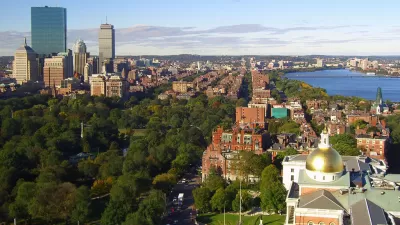A road project in Boston involves removing hundreds of mature trees. Residents say the plan is an environmental justice issue.

A plan for a complete streets redesign of a roadway in the Roxbury neighborhood of Boston includes wider sidewalks, bike lanes, and improved bus stops. But it also involves cutting down scores of trees that run along the boulevard and could eventually threaten up to 500 mature trees.
"The rows of oaks, lindens, maples, and other trees that line Melnea Cass Boulevard in Roxbury have for decades provided vital shade, fresh air, and a leafy balance to a city corridor that can feel like a furnace in summer and a windswept tarmac in winter," reports David Abel.
More than 90 percent of Roxbury’s residents are people of color, and critics of the plan say that the trees provide essential shade and cover in an area experiencing extreme heat. They argue that removing the trees amounts to environmental racism.
The city says removal of the trees is necessary for the design of the road. A plan to replant in the area would replace the trees, but the saplings could take decades to reach maturity.
"Given the steadily rising temperatures from global warming — last month was tied for the second hottest July on record, following July 2019, the hottest month on record — critics of the project said the city should revise the construction plan to preserve far more trees," notes Abel.
FULL STORY: Alleging ‘environmental racism,’ residents protest plan to remove scores of mature trees in Roxbury

Planetizen Federal Action Tracker
A weekly monitor of how Trump’s orders and actions are impacting planners and planning in America.

Map: Where Senate Republicans Want to Sell Your Public Lands
For public land advocates, the Senate Republicans’ proposal to sell millions of acres of public land in the West is “the biggest fight of their careers.”

Restaurant Patios Were a Pandemic Win — Why Were They so Hard to Keep?
Social distancing requirements and changes in travel patterns prompted cities to pilot new uses for street and sidewalk space. Then it got complicated.

California Homeless Arrests, Citations Spike After Ruling
An investigation reveals that anti-homeless actions increased up to 500% after Grants Pass v. Johnson — even in cities claiming no policy change.

Albuquerque Route 66 Motels Become Affordable Housing
A $4 million city fund is incentivizing developers to breathe new life into derelict midcentury motels.

DC Area County Eliminates Bus Fares
Montgomery County joins a growing trend of making transit free.
Urban Design for Planners 1: Software Tools
This six-course series explores essential urban design concepts using open source software and equips planners with the tools they need to participate fully in the urban design process.
Planning for Universal Design
Learn the tools for implementing Universal Design in planning regulations.
Heyer Gruel & Associates PA
JM Goldson LLC
Custer County Colorado
City of Camden Redevelopment Agency
City of Astoria
Transportation Research & Education Center (TREC) at Portland State University
Camden Redevelopment Agency
City of Claremont
Municipality of Princeton (NJ)





























